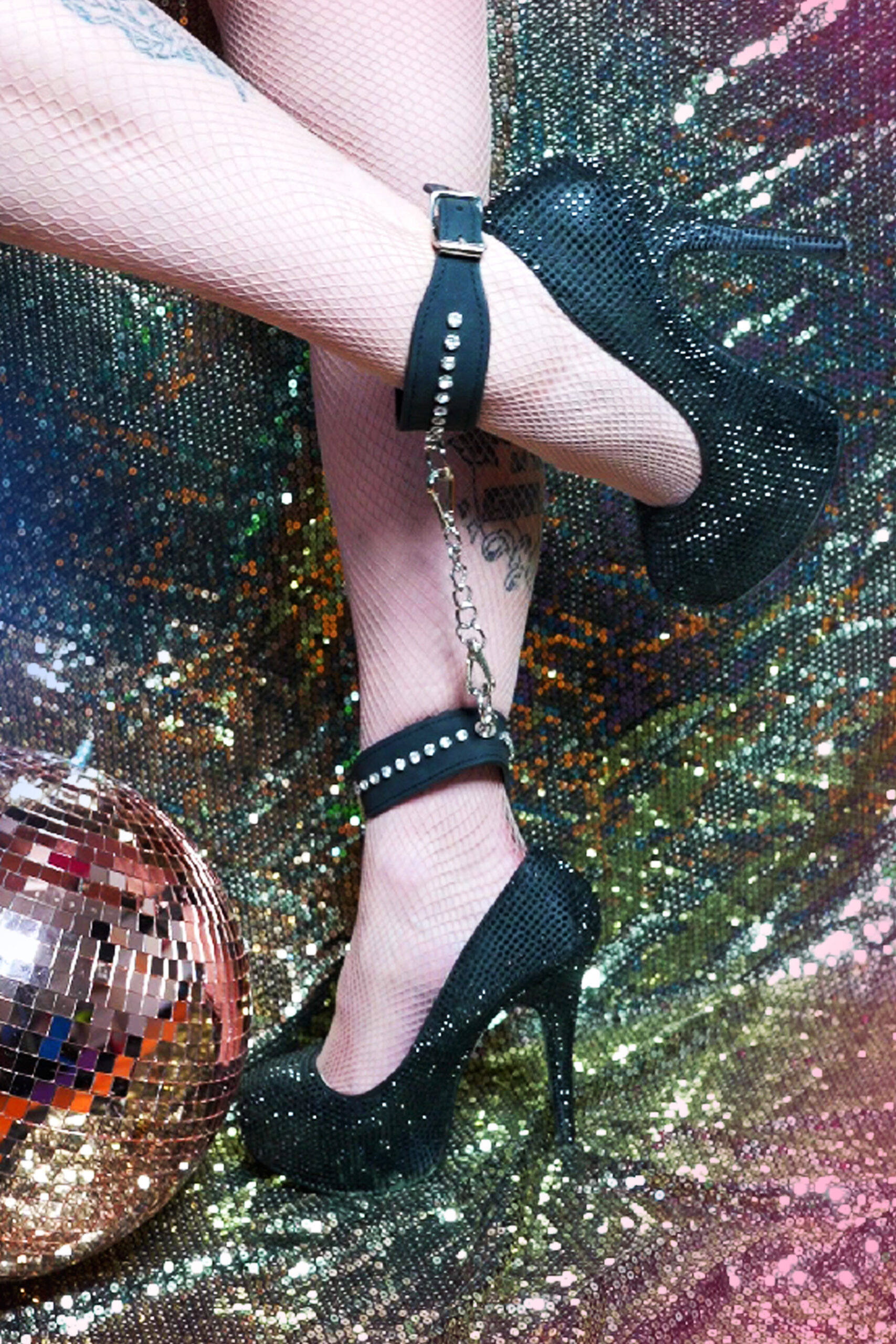Graysexuality Explained: When Sexual Attraction Isn’t Black And White

Understanding Graysexuality
Graysexuality exists on a spectrum where individuals experience sexual attraction in shades of gray rather than strictly black or white. It challenges the traditional binary understanding of sexuality, encompassing a range of experiences that fall outside the typical definitions of gay, straight, bisexual, and asexual. This exploration delves into the nuances of graysexuality, shedding light on its diverse expressions and providing insights into the complexities of human sexuality.
Definition
Graysexuality is an identity that describes individuals who experience sexual attraction in a way that doesn’t fit neatly into the categories of straight, gay, bisexual, or asexual.
Unlike those on the asexual spectrum who experience little to no sexual attraction, graysexual people do experience sexual attraction but it fluctuates in intensity and is often less frequent or intense than what is typically associated with heterosexual or homosexual experiences.
Graysexuality recognizes that human sexuality exists on a spectrum rather than as fixed categories. Individuals who identify as graysexual may be attracted to different genders at varying levels of intensity, find themselves drawn to certain people more intensely than others, or experience shifts in their attraction over time.
Spectrum of Attraction
The concept of graysexuality expands the understanding of sexual orientation by acknowledging the fluidity and complexity of human attraction. It recognizes that individuals may experience a spectrum of sexual desires and attractions that don’t neatly align with traditional binary labels.
A defining characteristic of graysexuality is the fluctuating nature of sexual attraction. Graysexual individuals might experience attraction to varying degrees at different points in time or towards different genders. This can lead to experiences of intense attraction alongside periods of little to no desire.
Understanding graysexuality is crucial for fostering inclusivity and acceptance within discussions about sexuality. It challenges the notion that sexual orientation is a static, unchanging trait and emphasizes the individuality and diversity of human experience.
Core Traits
Graysexuality exists on a spectrum where individuals experience sexual attraction in shades of gray rather than strictly black or white. It challenges the traditional binary understanding of sexuality, encompassing a range of experiences that fall outside the typical definitions of gay, straight, bisexual, and asexual.
Unlike those on the asexual spectrum who experience little to no sexual attraction, graysexual people do experience sexual attraction but it fluctuates in intensity and is often less frequent or intense than what is typically associated with heterosexual or homosexual experiences.
Graysexuality recognizes that human sexuality exists on a spectrum rather than as fixed categories. Individuals who identify as graysexual may be attracted to different genders at varying levels of intensity, find themselves drawn to certain people more intensely than others, or experience shifts in their attraction over time.
A defining characteristic of graysexuality is the fluctuating nature of sexual attraction. Graysexual individuals might experience attraction to varying degrees at different points in time or towards different genders. This can lead to experiences of intense attraction alongside periods of little to no desire.
Experiences and Challenges
Graysexuality challenges the traditional binary understanding of sexuality, existing as a spectrum where individuals experience sexual attraction in shades of gray rather than black and white. Unlike strictly asexual individuals or those who identify as gay, straight, or bisexual, graysexual people experience sexual attraction, but it fluctuates in intensity and frequency.
Navigating Social Expectations
Navigating social expectations surrounding sexuality can be challenging, especially for those who don’t fit neatly into traditional categories. Graysexuality, with its fluidity and spectrum of experiences, presents unique challenges in this regard. Society often pressures individuals to conform to binary labels and expectations about romantic and sexual behavior.
Graysexual individuals may face difficulty explaining their experiences to others who are unfamiliar with the concept. They might encounter misunderstandings, assumptions, or even judgment from those who expect a clear-cut definition of sexuality. This lack of understanding can lead to feelings of isolation and a sense of not belonging.
Additionally, societal pressures regarding relationships and intimacy can be particularly challenging for graysexual individuals. The expectation that all relationships involve sexual desire and activity may create internal conflict or strain when navigating partnerships.
Overcoming these challenges involves open communication, education, and a willingness to challenge societal norms. Graysexual individuals need supportive communities where they can share their experiences and connect with others who understand their perspectives.
Communication and Relationships
Understanding graysexuality is crucial for fostering inclusivity and acceptance within discussions about sexuality. It challenges the notion that sexual orientation is a static, unchanging trait and emphasizes the individuality and diversity of human experience.
- Open Communication: Encouraging honest conversations about sexuality, including experiences that fall outside traditional norms, is essential for breaking down stigma and fostering understanding.
- Education and Awareness: Providing accurate information about graysexuality and other variations of sexual orientation can help individuals better understand the complexities of human attraction.
- Building Supportive Communities: Creating safe spaces where graysexual individuals can connect with others who share their experiences can combat feelings of isolation and promote a sense of belonging.
Self-Acceptance and Identity
Graysexuality challenges the traditional binary understanding of sexuality, existing as a spectrum where individuals experience sexual attraction in shades of gray rather than black and white. Unlike strictly asexual individuals or those who identify as gay, straight, or bisexual, graysexual people experience sexual attraction, but it fluctuates in intensity and frequency.
Navigating social expectations surrounding sexuality can be challenging, especially for those who don’t fit neatly into traditional categories. Graysexuality, with its fluidity and spectrum of experiences, presents unique challenges in this regard. Society often pressures individuals to conform to binary labels and expectations about romantic and sexual behavior.
Graysexual individuals may face difficulty explaining their experiences to others who are unfamiliar with the concept. They might encounter misunderstandings, assumptions, or even judgment from those who expect a clear-cut definition of sexuality. This lack of understanding can lead to feelings of isolation and a sense of not belonging.
Additionally, societal pressures regarding relationships and intimacy can be particularly challenging for graysexual individuals. The expectation that all relationships involve sexual desire and activity may create internal conflict or strain when navigating partnerships.
Understanding graysexuality is crucial for fostering inclusivity and acceptance within discussions about sexuality. It challenges the notion that sexual orientation is a static, unchanging trait and emphasizes the individuality and diversity of human experience.
Open Communication: Encouraging honest conversations about sexuality, including experiences that fall outside traditional norms, is essential for breaking down stigma and fostering understanding.
Education and Awareness: Providing accurate information about graysexuality and other variations of sexual orientation can help individuals better understand the complexities of human attraction.
Building Supportive Communities: Creating safe spaces where graysexual individuals can connect with others who share their experiences can combat feelings of isolation and promote a sense of belonging.
Terminology and Context
Understanding language requires navigating not only its individual words but also the broader context in which they are used.

Context provides meaning, nuance, and interpretation to words that might otherwise be ambiguous or misleading.
In discussions about complex topics like sexuality, terminology becomes particularly crucial. Words carry weight and can shape perceptions, influence understanding, and even impact individual experiences.
Differentiating from Other Identities
Understanding language requires navigating not only its individual words but also the broader context in which they are used.
Context provides meaning, nuance, and interpretation to words that might otherwise be ambiguous or misleading.
In discussions about complex topics like sexuality, terminology becomes particularly crucial. Words carry weight and can shape perceptions, influence understanding, and even impact individual experiences.
When discussing graysexuality, it’s important to differentiate it from other identities to ensure accurate representation and understanding.
- Asexual (Ace): Individuals who experience little to no sexual attraction.
- Bisexual: Individuals attracted to two or more genders. thick stretchy ring
- Gay/Lesbian: Terms typically referring to same-sex attraction.
- Straight: Individuals attracted primarily to the opposite gender.
- Graysexual: Individuals who experience sexual attraction but in a fluctuating and less intense way than traditionally understood.
It’s important to note that these categories are not mutually exclusive, and individuals may identify with multiple labels or find that their experiences fall outside of any specific definition.
The Role of Language in Understanding
Understanding language requires navigating not only its individual words but also the broader context in which they are used. Context provides meaning, nuance, and interpretation to words that might otherwise be ambiguous or misleading. In discussions about complex topics like sexuality, terminology becomes particularly crucial. Words carry weight and can shape perceptions, influence understanding, and even impact individual experiences.
When discussing graysexuality, it’s important to differentiate it from other identities to ensure accurate representation and understanding.
- Asexual (Ace): Individuals who experience little to no sexual attraction.
- Bisexual: Individuals attracted to two or more genders.
- Gay/Lesbian: Terms typically referring to same-sex attraction.
- Straight: Individuals attracted primarily to the opposite gender.
- Graysexual: Individuals who experience sexual attraction but in a fluctuating and less intense way than traditionally understood.
It’s important to note that these categories are not mutually exclusive, and individuals may identify with multiple labels or find that their experiences fall outside of any specific definition.
Resources and Support

Understanding graysexuality requires navigating its complexities and recognizing the resources available to those who identify with this identity.
For graysexual individuals seeking information, support, and community, various resources exist.
Online forums and support groups provide spaces for connection and shared experiences.
Educational websites and articles offer insights into the nuances of graysexuality and address common misconceptions.
Additionally, mental health professionals experienced in working with individuals who identify as LGBTQ+ can provide guidance and support in navigating personal journeys and societal challenges.
Online Communities and Forums
Understanding graysexuality requires navigating its complexities and recognizing the resources available to those who identify with this identity. For graysexual individuals seeking information, support, and community, various resources exist.
Online forums and support groups provide spaces for connection and shared experiences. Educational websites and articles offer insights into the nuances of graysexuality and address common misconceptions. Additionally, mental health professionals experienced in working with individuals who identify as LGBTQ+ can provide guidance and support in navigating personal journeys and societal challenges.
Therapists and Counselors Specializing in Sexuality
Understanding graysexuality requires navigating its complexities and recognizing the resources available to those who identify with this identity.
For graysexual individuals seeking information, support, and community, various resources exist.
Online forums and support groups provide spaces for connection and shared experiences.
Educational websites and articles offer insights into the nuances of graysexuality and address common misconceptions.
Additionally, mental health professionals experienced in working with individuals who identify as LGBTQ+ can provide guidance and support in navigating personal journeys and societal challenges.
There are therapists and counselors who specialize in sexuality and can be a valuable resource for graysexual individuals. These professionals can offer a safe space to explore feelings, navigate relationships, and address any challenges related to their identity. When seeking out a therapist, it is important to find someone who is knowledgeable about and affirming of graysexuality and other sexual identities.
Here are some organizations that provide resources and support for the LGBTQ+ community:
- The Trevor Project: A suicide prevention and crisis intervention organization for LGBTQ+ youth.
- GLAAD: An organization working to promote understanding and acceptance of LGBTQ+ people through media representation.
- Human Rights Campaign (HRC): An advocacy group fighting for butter turner position LGBTQ+ equality.
Explore more from the magazine
Discover all the major points














